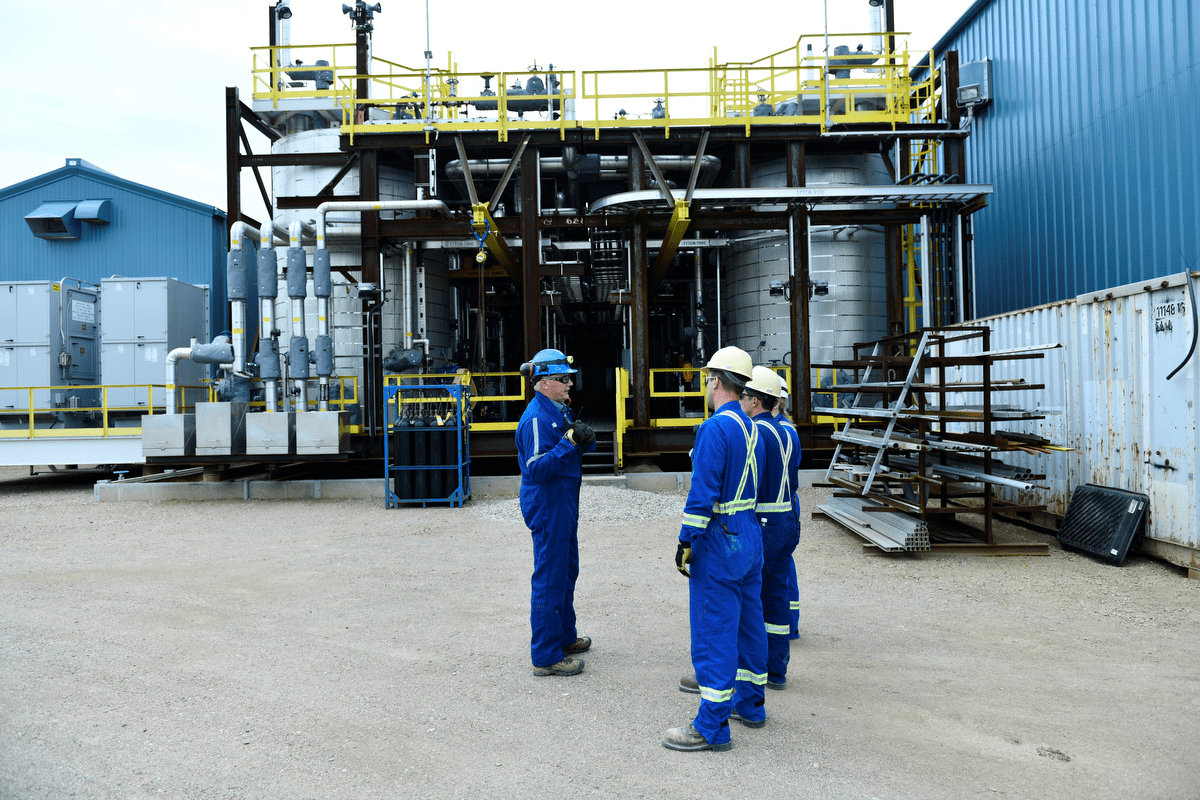Our bodies are made up of more than 50 per cent water and 70 per cent of the Earth’s surface is covered by it. We can’t live without it, which is why we celebrate it every March 22 on World Water Day.
The theme this year is ‘valuing water,’ which asks us to consider what water means to us. Water is an essential part of our operations and it’s important for us to find ways to continuously improve our water use across our business.
One way we’re working to manage this precious natural resource is by working with industry partners on water treatment technologies and best practices at the Water Technology Development Centre (WTDC), located at our Firebag in situ facility in northern Alberta. Convened under Canada’s Oil Sands Innovation Alliance (COSIA), the WTDC is a first-of-its-kind demonstration site for oil sands project partner companies to pilot water treatment technologies.
The WTDC is now in its second year of operations of a five-year technology pilot program.
“In the first year of operations, we learned a lot about how to run this new testing facility. Even though we had to shut down the facility for five months because of COVID-19, we continued to plan and collaborate with our partners and the clean technology companies,” says Michelle Squires, manager, operations technology development at Suncor. “The first group of technology pilots are on track to wrap up at the end of 2021.”
The WTDC is focused on developing technologies that improve the performance of our existing water management processes and providing design improvements for future developments. The facility allows us to test multiple technologies at the same time and allows the partners to conduct more pilots than each could on their own, while sharing the risks and costs. Over a five-year period, we expect to run anywhere between 25 to 30 pilots, a remarkable pace of field testing for technology development in our industry.
To date, seven pilots are underway at the WTDC, with another scheduled to begin later this year. Each pilot is focused on delivering innovative technology solutions to improve the economic and environmental footprint of our operations. The new technologies being piloted support our industry goals to use water resources in a more energy efficient manner, reduce the high cost of water treatment and improve reliability of water treatment operations.
The partner companies can share and leverage their expertise, incorporate learnings from academic and research institutions and provide access to chemical suppliers, instrument vendors and equipment manufacturers that otherwise might not get the opportunity to test their technologies for our industry.
“I am so proud of how well everyone works together,” says Michelle. “Although we are multiple companies that work at the WTDC, it really feels like one team—it’s a highly effective group that collaborates really well.”
With the challenging year we faced in 2020 due to the pandemic, starting these pilots and establishing a collaborative team are victories that help us take incremental steps to improve water management for our existing operations.
“Challenges seem smaller when there are many people working on them together, and the achievements feel bigger because we celebrate them together.”



